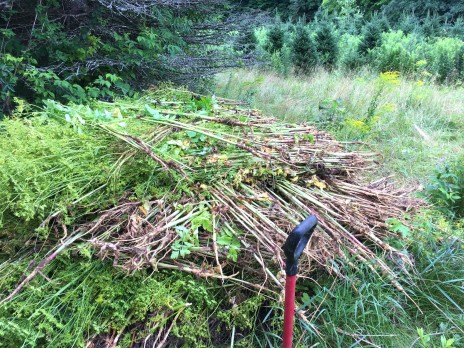Here’s a late-summer picture demonstrating the use of weed drying stations in management of wild parsnip. See all the Christmas trees? If you scroll down a few posts, you’ll see the same tree farm as a field of gorgeous yellow. Lovely, unless you need to work in and among the lower-growing young trees. So while I think of weed drying stations as a spot for piling plant material for sun-baking, a hotspot is simply a weed drying station that MAY contain some plants with viable seed. It needs monitoring, absolutely, but I’ve achieved the goal of pulling them all into one specific place. No seeds dropping all over the 9-acre property. So we add onto weed drying stations all summer long, but at some point, viable seed becomes an issue. That’s when we exercise real caution not to spread seed, but we still pull the plants and consolidate the risk in one station: a hotspot.
News:
My prezi for The Stewardship Network is now archived on their website. Need to Refresh your Mindset? Find it under the Get Involved tab and click on Monthly Webcasts (Feb, ’23). www.stewardshipnetwork.org
One helpful tip I suggest is to have wash water available at all times on project sites. Wash water, mild soap, and a few paper or plastic bags are good for cleaning up after unplanned encounters with poison ivy. :( Also, I’m seeing extensive tree damage this year, so keep an eye on things above before you dive into project work.
Cheers.
Search ChoosewiselyVT
-
Recent Posts
Categories
Pages
-
Join 42 other subscribers

